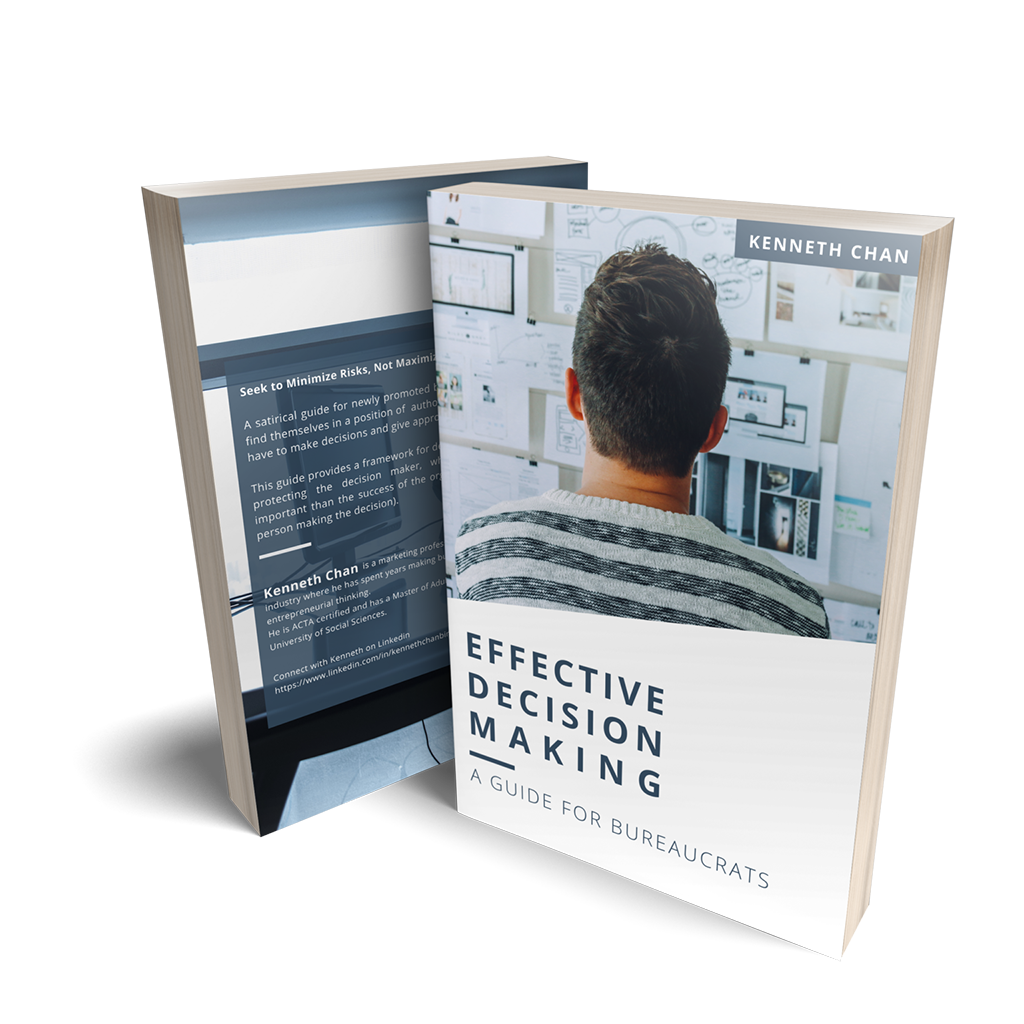Download the e-book that inspired this post.
Congratulations! You’ve moved up the bureaucracy and are now a manager with the power and authority to make decisions.
The years of keeping your head down, doing what you were told (nothing more) and doing busywork with no business impact have finally paid off! But with this new “decision making responsibility” comes with new risks to your livelihood.
Here are 4 levels of “effective” decision making strategies to help you keep your job:
Level 1: Avoid
This should form the foundation of all decision making as a Bureaucrat.
Remember, every time you don’t publicly make a decision, you’ve dodged a bullet. If you can avoid making a decision, that is the path you must take.
Level 2: Deflect
Constantly provide reasons why it is not within your department’s scope of work and point it to the next most relevant department.
A good scapegoat would be any marketing or sales team in the organization who have hard targets, rather than the vague process improvement KPIs you have.
Level 3: Stick to the default
If the decision pertains to your department, or it was specifically assigned to you by someone far up the bureaucracy that you need to brown nose, avoidance and deflection will not work.
In fact, it would make you look bad.
This is where you need to make a show of boldly “volunteering” to make a decision despite being the only one who has the authority to do so.
At this level, you just need to find the default choice. The question to ask yourself is “has it been done before?”
The best part about choosing the default choice? It doesn’t even feel like decision making at all!
And if it results in failure, simply explain it was a logical decision making process based on past successes! It’s unlikely that you will be blamed for making a logical choice, you’re in a bureaucracy after all.
Level 4: Defensive Decision Making
Now, you might find yourself in a situation where you need to make a decision but there’s no precedence!
Stay calm. Defensive decision making can help.
The aim of defensive decision making is not to maximize gain, but to minimize risks to the decision maker in the event of a negative outcome.
It’s essential to understand that a good outcome will merely be expected, but a negative outcome would have significant consequences. There is no upside to choosing a riskier but ultimately more worthwhile option.
A business owner might make a different decision, one where they try to maximize gain for the growth of their business. However, you’re merely a cog in a giant machine and need to choose the option that protects you, the decision maker.
It may seem irrational, but think of it this way: A great outcome may bring about a pat on the back, nobody cares about a neutral outcome and a negative outcome could get your fired or hinder any future promotions.
Effective Decision Making for Bureaucrats
Free E-Book Download
Seek to Minimize Risks, Not Maximize Gains.
A satirical guide for newly promoted bureaucrats who suddenly find themselves in a position of authority where they constantly have to make decisions and give approvals.
This guide provides a framework for decision making focused on protecting the decision maker, which is ultimately more important than the success of the organisation (at least to the person making the decision).
DownloadBut seriously…
In all seriousness though, this satirical guide is written to help regular folk like yourself to understand what defensive decision making is and identify when it’s being used.
When you start to realize that someone is utilizing defensive decision making, their actions may start to seem more logical and make some sense.

